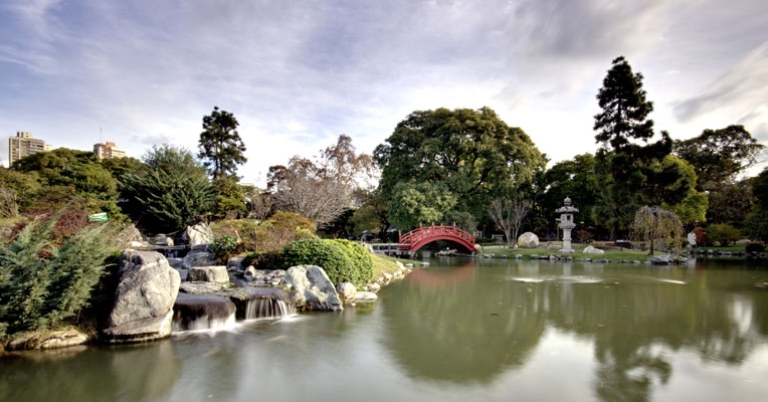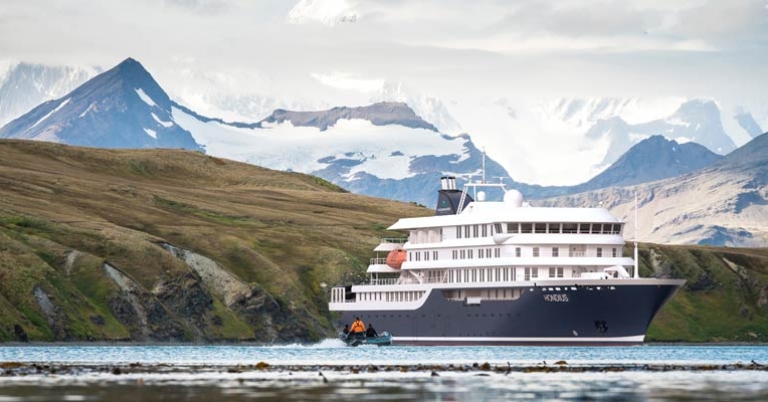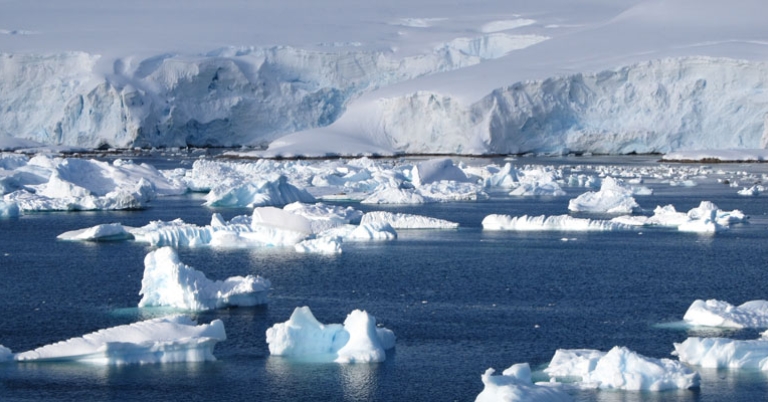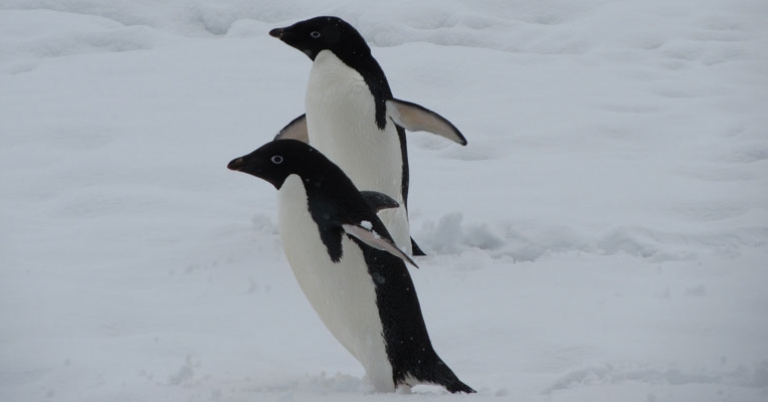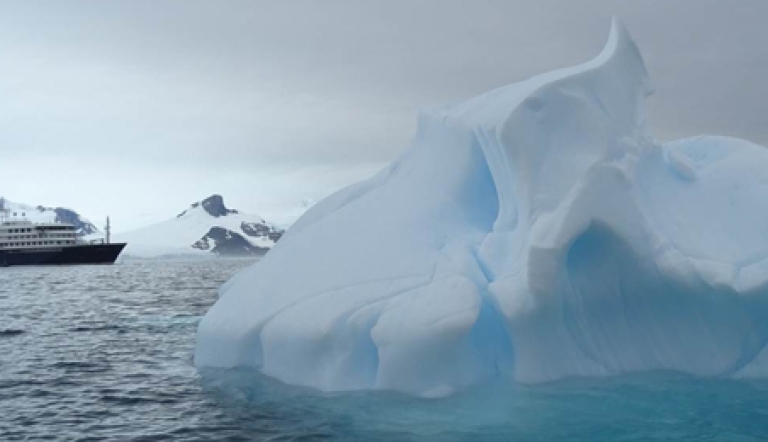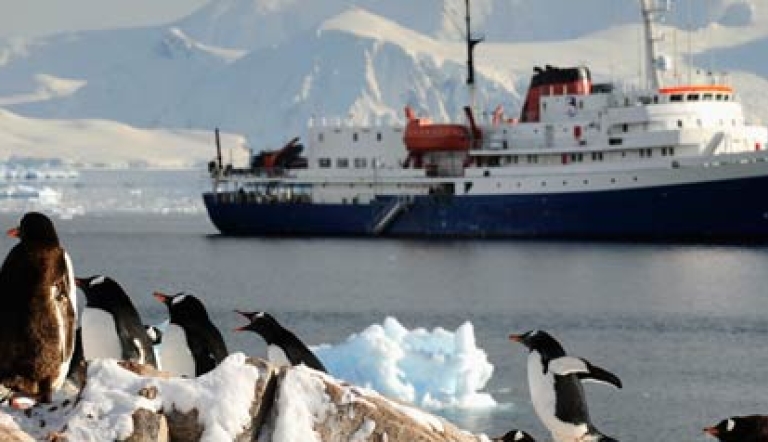Antarctic Discovery aboard M/V Hondius
About this trip
Reach new depths on this stunning voyage to “The End of the World.” Start the journey to Antarctica with a two-day pit stop in the colorful, gritty and spirited city of Buenos Aires to explore its culturally rich museums, beautiful gardens and delicious gastronomy. Travel to the capital of Tierra del Fuego, Ushuaia, and discover its scenic Lake District. Board the m/v Hondius, the vessel that will be home for the journey to icy but beautiful Antarctica, and join an unforgettable excursion to observe the native marine and avian wildlife while marveling at the epic scenery of striking glaciers and icebergs.
PLEASE NOTE: Program price may depend on cabin type and departure selected. Contact us for more details.
Highlights
- Discover the charm of Buenos Aires by visiting the emblematic sites of the Carlos Thays Botanical Garden, the Buenos Aires Japanese Gardens and the Latin American Art Museum of Buenos Aires.
- Venture into one of the southernmost cities on earth, Ushuaia, and enjoy the sweeping landscapes of Lago Escondido and Lago Fagnano.
- Embark on the journey to Antarctica aboard the m/v Hondius to sail through the Beagle Channel and the Drake Passage.
- Observe native species of birds, like Wandering Albatrosses, Cape Petrels, and Adélie Penguins, as well as great mammals, like humpback and minke whales, and leopard seals.
- Marvel at the breathtaking topography of the peninsula with its glaciers, icebergs and alpine peaks. Depending on the local conditions, some of the sites you may visit are Neko Harbor, Paradise Bay, the former British research station of Port Lockroy, the humpback whale hotspot of Wilhelmina Bay, and the Gentoo Penguin nesting place of Danco Island.
What makes us different
Wildlife up-close
Service anytime
Cultural Discovery
Flight arrangements
Rich content
Low stress travel planning
Daily Itinerary
Print ItineraryDepart U.S.
Day 1Buenos Aires
Day 2Buenos Aires
Day 3Ushuaia
Day 4Antarctica
Day 5Antarctica
Day 6Antarctica
Day 7Antarctica
Day 8Antarctica
Day 9Antarctica
Day 10Antarctica
Day 11Antarctica
Day 12Antarctica
Day 13Departure
Day 14Arrival USA
Day 15Pricing
Print PricingPlease call 800-451-7111 for your price.
What's Included
- Activities and meals as mentioned in itinerary
- Local guide during tours only
- Private transportation for tours and transfers
What's Not Included
- Airfare not included
- Tips
- Travel Insurance
Travel Info
Print Travel InfoEntry & Exit Requirements
Note: Most Antarctica trips depart from Argentina.
U.S. citizens must have a valid passport to enter Argentina. Passports must have at least one fully blank page for the entry stamp, and must be valid for at least the duration of your stay. As this requirement is subject to change at any time without notice, we recommend at least 6 months' validity.
A visa is not required for visits up to 90 days.
You must present proof of mandatory travel medical insurance for entry into Argentina. Your travel insurance policy must be valid for the full duration of your trip and include coverage for medical and hospital care, accidents or illnesses (including COVID-19), 24/7 emergency assistance, and medical evacuation and repatriation.
If you are not traveling with a U.S. passport, please check with the Argentine Embassy for the requirements based on your nationality.
Health Information
Immunizations
The Centers for Disease Control recommends that all travelers be up to date on routine vaccinations such as measles-mumps-rubella (MMR) vaccine, diphtheria-pertussis-tetanus vaccine, varicella (chicken pox) vaccine, and your yearly flu shot before every trip.
There are no vaccinations required for entry into Antarctica or Argentina.
Though not required, the CDC recommends that most travelers get hepatitis A, hepatitis B, and typhoid vaccines before visiting Argentina.
If you are extending your time in Argentina, please note that yellow fever is a risk in the Corrientes and Misiones provinces (including at Iguazú Falls). The CDC recommends the yellow fever vaccine if you are traveling to these areas.
Please consult your physician for additional information and recommendations based on your individual circumstances.
Dengue Fever & Other Insect-borne Illnesses
Locally transmitted cases of dengue fever have been reported in Argentina. Local transmission means that mosquitoes in the area have been infected with dengue and are spreading it to people. In addition, locally transmitted cases of leishmaniasis, Zika virus, and other insect-borne illnesses have previously been reported in Argentina.
To protect against mosquitos and other insects, the CDC recommends that you cover exposed skin with lightweight, long-sleeved shirts and pants, consider treating clothes with permethrin, and use an insect repellent containing an EPA-registered active ingredient like DEET, picaridin, or oil of lemon eucalyptus (OLE). Apply sunscreen first, followed by the repellent, ideally 20 minutes later.
Be careful when applying products containing DEET, as it can damage or dissolve certain synthetic fabrics as well as plastic, rubber, vinyl, or elastic materials, such as those used in camera equipment, binoculars, phone cases, sunglasses, or watches. Additionally, some research suggests that when DEET and picaridin enter local waterways, they can be harmful to amphibians and other wildlife. When selecting a repellent, it is ultimately up to each traveler to weigh the risks and benefits of different options, keeping in mind both environmental factors and the importance of protecting against illness.
As a precaution, the CDC advises women who are pregnant to consider postponing travel to any area where Zika virus transmission is ongoing.
Severe Weather
Antarctica is the coldest, windiest, and driest place on earth. Temperature patterns vary widely because the continent is covered in continuous darkness during the winter and continuous sunlight during the summer, with a few weeks of sunrises and sunsets between seasons. For travelers to Antarctica, severe low temperatures and high winds are the primary health hazards.
Frostbite
Frostbite is damage to the skin from freezing and is due to prolonged exposure to cold temperatures. Symptoms include patches of reddened skin that become white, hard, and swollen; or skin that burns, tingles, or is numb or painful. Severe cases can result in blisters or ulcers forming and may involve deeper tissues. The most common sites for frostbite are the fingers, hands, toes, feet, ears, nose, and cheeks. To avoid frostbite, dress warmly and in layers but avoid tight clothing as it may reduce circulation. Keep the face and extremities covered. Avoid overheating and excessive perspiration. Change out wet clothing, especially socks and gloves.
Hypothermia
Hypothermia is life threatening. It is caused by cold, wet, or windy weather that causes the body to lose heat faster than it can produce heat. Symptoms include feeling cold, uncontrollable shivering, clumsiness due to loss of muscle coordination, slurred speech, inability to think clearly, and eventual unconsciousness and cessation of reflexes including heart and lung functions. Many victims in the later stages of hypothermia feel warm and try to shed clothing. To treat hypothermia, first warm the core of the body before the extremities. Remove any wet clothing. Re-warm the victim slowly; do not warm fast by immersing in warm/hot water. Provide shelter out of the weather. Warm drinks are not necessary, but may help in the psychological recovery. Do NOT give alcohol. Try to keep victim awake as this helps keep the body temperature up.
Sun Exposure
Despite freezing temperatures, the effects of the sun in Antarctica (because of the sun’s reflecting off the snow) can be damaging to the eyes and skin. Spending time outdoors exposes you to the sun’s harmful ultraviolet (UV) rays, even on cloudy days. To protect yourself from the sun, use a broad spectrum sunscreen of at least SPF 15, protect skin with clothing, wear a wide-brimmed hat and sunglasses, and drink plenty of fluids.
Currency
Antarctica does not have an official currency. The currency of Argentina is the Argentine peso.
Resources
Print ResourcesAbout your vessel
Packing Recommendations
Everyone has personal preferences when it comes to packing; for this reason, the information below is offered as a general guide and not a definitive list. You know yourself best: Use your discretion and pack what you think will serve you, based on your personal preferences and specific itinerary.
You may find many of the items below in our Gear Store.
Climate
During the Austral summer, temperatures in the Antarctic are generally in the 20°F to 40°F range. Although it can be quite sunny, expect rain, snow, fog, and a high wind-chill factor. Pack clothing that can be worn in layers, as it is comfortably warm aboard the ship but often cold on deck.
Expedition Clothing
- Waterproof rain jacket
- Waterproof trousers
- Rubber boots: pull-on, unlined, knee-high boots are required for wet landings. Boots must be 14”-16” high with strong, rubber-ridge, non-skid soles. These specifications are very important. You may be stepping into water up to 10” deep on wet landings. Moon or leather boots are NOT appropriate.
- Water-repellent hooded parka
- Waterproof gloves or mittens
- Hat, scarf, or other face protection
- Jacket or sweaters: It is best to bring at least one lightweight and one heavy jacket or sweater. Sweatshirts, turtlenecks, and fleece pullovers are also good insulators. Layering with wool, silk, or synthetics fabrics (rather than cotton) is recommended.
- Wool socks
- Warm pants
- Thermal or long underwear
- Lightweight shirts and T-shirts
Clothing On-Board
Comfortable and casual clothing, in the expedition spirit, is recommended for the vessel. Appropriate footwear includes at least one pair of deck-type, rubber-soled (no slip) shoes.
Other Gear
- Sunscreen and lip protection (minimum SPF 15)
- Sunglasses
- Binoculars
- Plastic bags (Plastic zip-lock bags will protect your camera and binoculars from wave splash and spray while in Zodiacs)
- Backpack/day pack for shore excursions
Expedition Clothing & Gear for Rent in Ushuaia
Available items for rent in Ushuaia are:
- Water-resistant parka
- Rain pants (with insulation)
- Backpacks
(If you wish to rent any of the above, please contact Holbrook to reserve and request size.)
Personal Toiletries & Other Items
- Put personal toiletries in a Ziploc bag. Take small containers that contain only what you will need during the trip.
- Shower cap
- A face cloth or small towel of lightweight, well-worn cotton that dries quickly
- An electric razor or hair dryer (Electric current on board is 110 V/ 60 Hz and cabins are fitted with multi-type sockets suitable for several international plugs. However, we recommend bringing necessary converters and any special adapters with you as only a limited number can be borrowed on board.)
- Personal medication and copies of prescriptions: We advise you to carry these with you as you travel in case of lost luggage.
- Dramamine, Bonine, or similar if you are prone to motion sickness
- First aid kit
- Small quantity of laundry detergent if you’ll be washing clothing by hand (Laundry/dry cleaning services are not offered on board.)
- Individual, pre-moistened towelettes and/or hand sanitizer
- Contact lenses and/or an old pair of eyeglasses (in case of breakage) with a copy of your eyeglass prescription
- Notepad and pen
- Camera with extra batteries and memory cards, plus a waterproof dry bag
- Travel alarm clock
- Important documents and photocopies of all documentation, passport, and tickets (e.g. passport, driver’s license, airline tickets, travel itinerary, maps, emergency phone numbers, insurance cards)
- Cash, credit cards, and/or traveler’s checks

